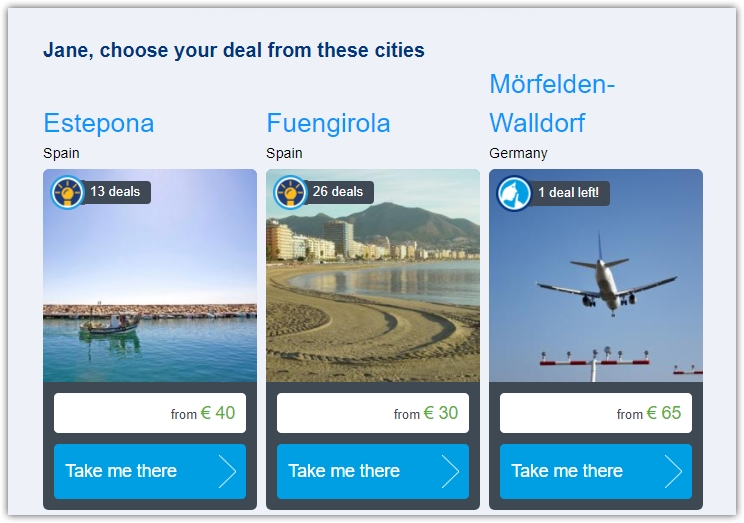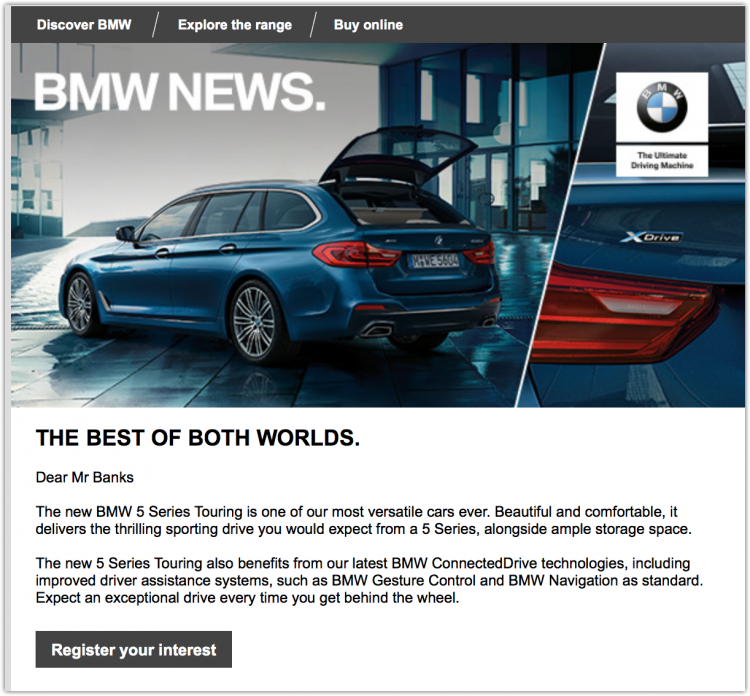We all like to feel special. Even the most cynical amongst us enjoy some attention every now and then. And when it comes to how we interact with brands, we expect a more personalised experience than we’ve previously been accustomed to. No longer do we want to be faceless customers to companies – we demand to feel loved by Coca-Cola, Apple, Samsung et al.
But from a brand’s point of view, how do you interact with the masses while trying to make each person feel like your message is personalised to the individual? From an email perspective – one of the easiest ways to connect with consumers – personalised messaging is the way to go.
Over the course of this article, we will take a look at how personalising your emails can lead to more transactions. Plus some ideas that you might want to try for your next round of personalised communications.
Customer experience is vital
A report published by Walker suggests that a customer’s overall experience with a brand will be considered even more important than price by the year 2020. These findings raise the stakes for brands, who now need to place the customer before other processes.
An easy way to start personalising emails is by referring to your recipient directly, using their name in all communications. It also helps to send the email from a person within the company, rather than use the business name, which can seem cold and treat the customer as an afterthought.

Humanising your communications creates an aura of a one-to-one conversation, instead of the customer feeling like the message comes from a faceless company.
Segmentation
Personalising emails comes with its uphill battles, especially if your recipient list is in the thousands. The last thing you want is for someone in the company spending the day writing individual emails to everyone in your database.
Segmentation is a useful way to negate this problem. Most email clients allow you to split lists into groups such as buying personas and lifecycle stages. Buying personas might include a group of people interested in a specific topic.
For example, an automobile company will probably want to segment their send list to customers who have requested information on specific car models. That way they only receive information on subjects that truly matter to them.

Clothing brands are a more obvious example of email segmentation in relation to gender. Men are more likely interested in receiving fashion lines for the males. Women’s interests are more focused on female-related products.
Email segmentation allows a smaller group of people to receive content that interests them, rather than bulk hit-and-miss sends going to a whole database.
Build relationships
Interacting with a brand is frustrating when you have already made a past purchase only to receive an email treating you like a brand new customer. One of the ways to counteract this is by sending communications which acknowledge that the recipient already has a purchase history. Treat them like a client, rather than a faceless customer.
Simple emails that ask about their experience with a product and if they like to leave a review of their purchase act as an excellent bridge-builder to attaining future business. It’s a small touch, but the small touches often are the most important ones.
Make their experience positive, and they will reward that feeling with brand loyalty. User experience doesn’t begin and end on your web page; it’s the entire funnel of your relationship with customers.
Content is king
The copy in your email isn’t the only aspect that can help with personalisation; the visuals play an important factor, too. Ok, so we know it’s unlikely that you can send emails to your customers that feature images of them – that would also be a bit creepy. However, user-generated content earns more trust with consumers, especially younger generations.
As decision makers, when it comes to purchases, we are tired of seeing the same type of image and want more authenticity in our visuals. Emails with personalised pictures increase interaction by 161%! By seeing imagery we can relate to, we are more likely to identify with brands, as we believe they ‘get us’.
Imagery isn’t the sole place that we see this send. UGC is acting as a seal of approval through peer reviews, podcasts, videos – basically anything created about a brand by the user.
Subject lines
Always save the best for last. Your subject line is amongst the most important part of an email. If the subject doesn’t catch the eye, no one is going to read about all that great news you have to share.
So, with that in mind, what actions do you need to take with your subject line? You guessed it: personalisation. Personal subject lines are known to garner increasingly higher open rates than regular email subject lines. It’s important that you get personalising.

Simple touches like including their name can see your recipients doing a double take and increase your open rates. Another way to personalise a subject line is by sending an email to someone who added an item to their cart but didn’t complete the transaction.
Be consistent with your message, too. Don’t use surnames because that’s way too informal. Instead, address them by their first name.
Personalisation equals a better email strategy
If you are with your customer through each stage of the buyer’s’ journey, you will build a relationship with them. One that makes them feel relevant to your brand and not just the endpoint of a sales campaign.
As technologies improve, the way that we interact with consumers through emails will become even more personable. With review sites like Trustpilot and Yelp, the digital age now depends on word of mouth just as much as local high-street businesses.
Personalisation is a key way to build a more effective strategy and make the customer feel valued and a well-looked after part of your brand.